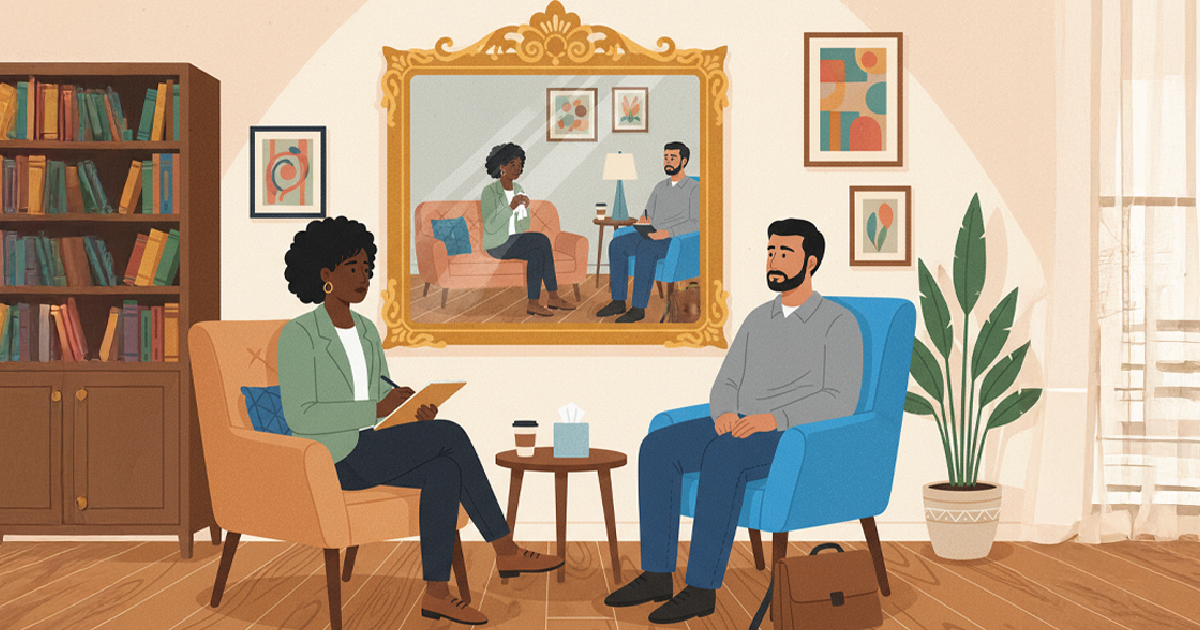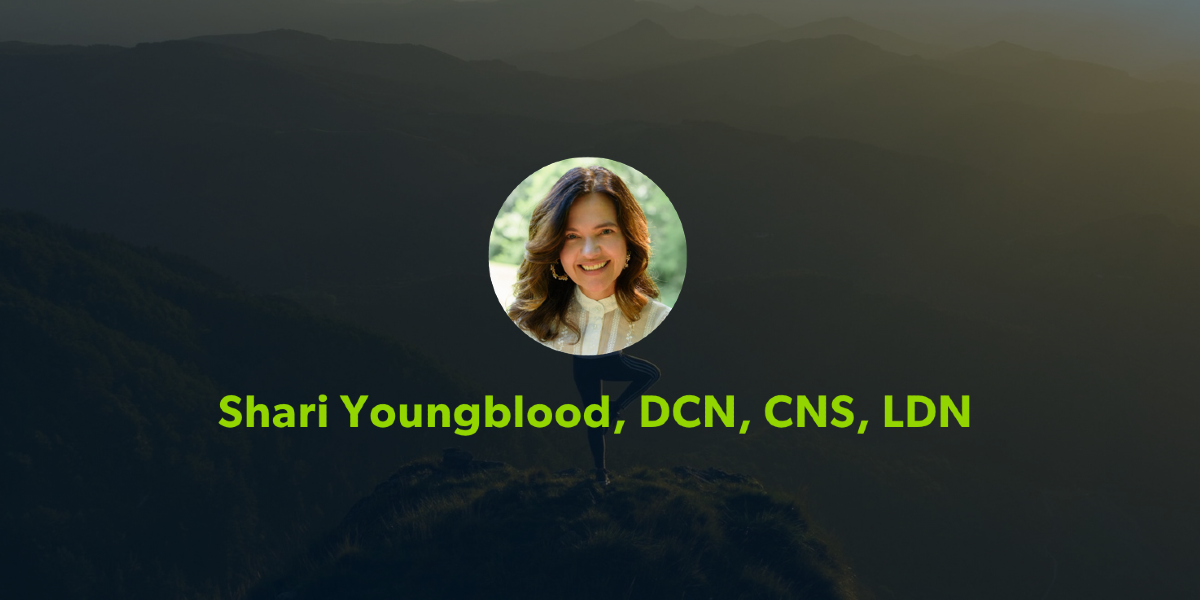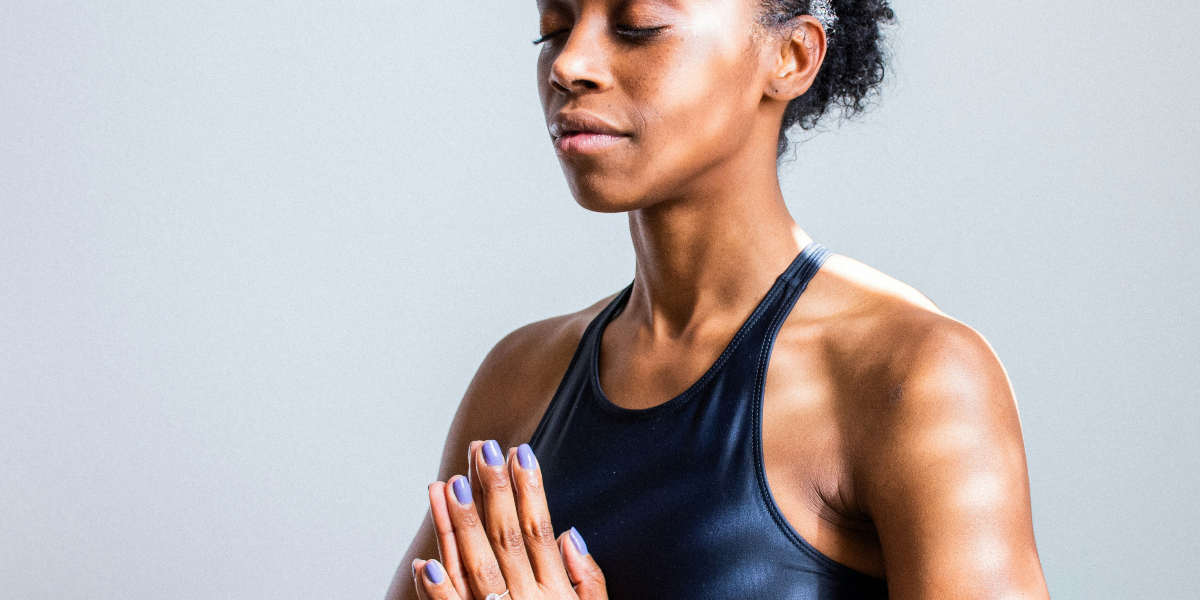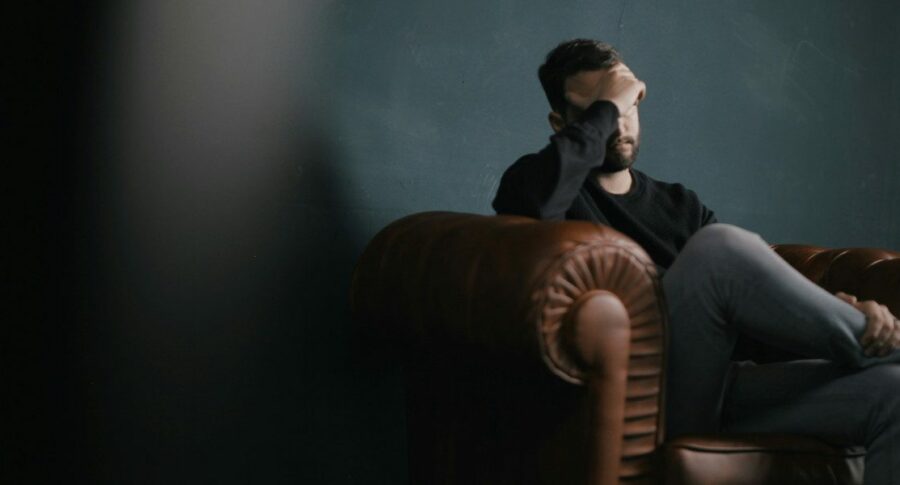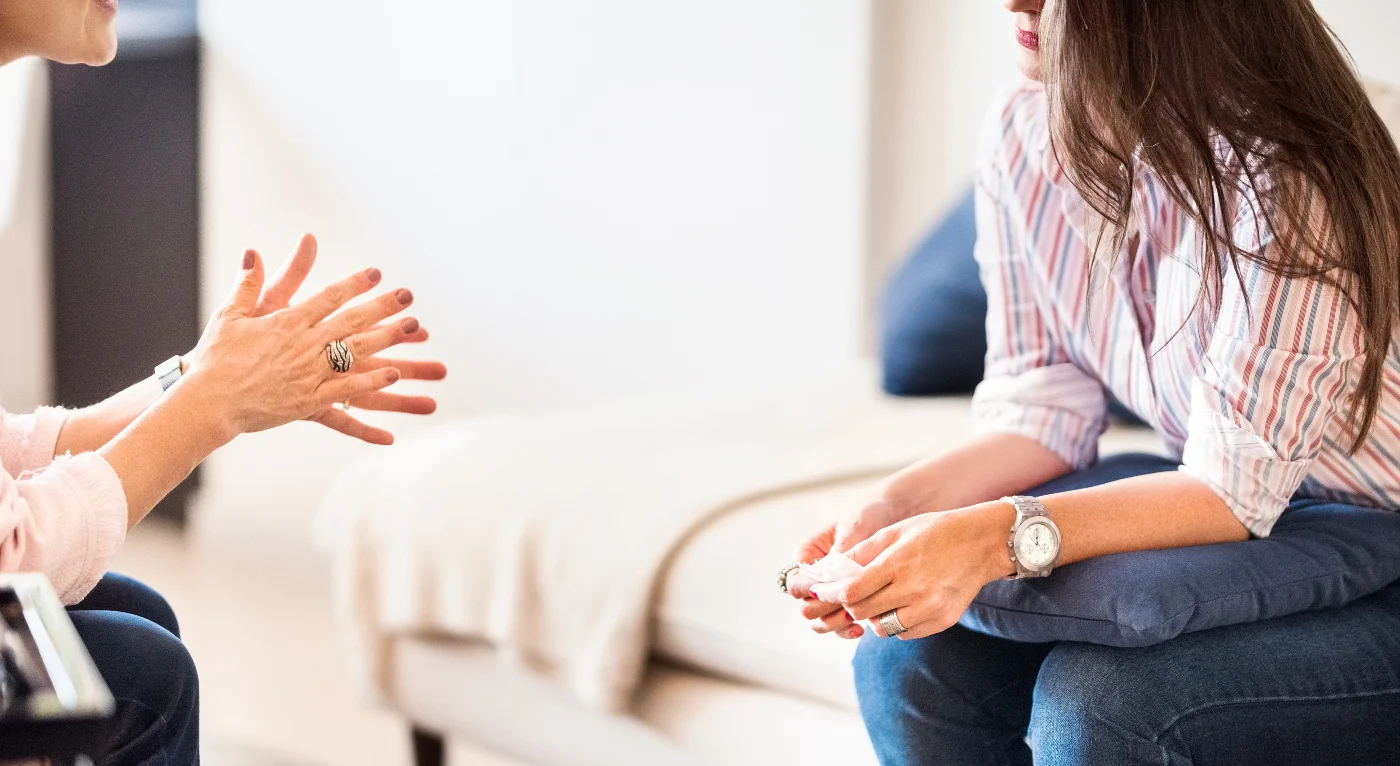The visuals were gripping.
Early in the pandemic, patients dwarfed by machinery and medical equipment, the activity concentrated in the center of the room, far from the door, far from people. COVID-19—at that point an enigma yet a lethal threat—threw society into a panic that divided it, first physically, then emotionally.


Who can forget the stories of doctors and nurses facilitating video calls for sick patients with family members who weren’t allowed in the hospital? The front line workers who were often the sole source of comfort for those shut off from the rest of civilization, ticking time bombs of germs and sources of infection?
According to a Northwestern Medicine study, patients who died from COVID-19 in 2020 were almost 12 times more likely to die in a medical facility than patients who died from any cause in 2018.
The new study analyzed data from the Centers for Disease Control and Prevention for deaths related to COVID-19 from February 1, 2020, to May 23, 2020, and found
died in medical facilities
died in nursing homes
died at home
died in hospice facilities
Three distinct perspectives come into play here: the person who is dying, the loved one who is grieving, and the medical professionals who are acting as the bridge (and therefore, taking on some emotional burden). While many media stories focus on dying alone, not many have centered on the aftermath and the people who are left behind. At the same time, we see plenty about the potential PTSD health care professionals are up against, but little on how to manage while we are still in the heart of the pandemic.
This sense of loss isn’t barred to just the health care sector. Loss is synonymous with 2020. Wildfires and hurricanes. Canceled milestone events. The heightened response to police brutality.
“Loss is what occurs when we experience a separation, while grief is a healthy and expected outcome when we experience loss,” says Gina Belton, Ph.D., a psychology faculty member at Saybrook University. “On a collective and personal level, there has been loss of employment, loss of housing, loss of certainties that we believed were present that would offer stability—and there is deep grief around that. In times of great catastrophe, we often rely on the support of community, but simple acts of being neighborly or relying on our community can put us at risk. We now have a whole generation of people trying to navigate how to experience grief and loss. It’s monumental.”
Social isolation, grief, and loss are now all shared experiences for so many. And while we’re experiencing them at the same time, for the first time we’re largely all apart—which adds another layer to the grieving process. With loved ones far, other people have become involved in new and creative ways, like health care professionals acting as proxies for patients, or family members finding community and camaraderie online. Addressing this grief, and preparing for these new roles, have become so much more of a necessity.
We must rethink end-of-life care and grief. COVID-19 has offered a natural reset point—connecting us all through this shared experience. We need to creatively reimagine ways to show up for one another before and after death. If 2020 has taught us anything, it’s that we may not be together, but we’re also not apart.

Grief and loss a world away
Kari Rogenski, a student in the Ph.D. in Psychology: Creativity Studies Specialization, knows all too well the struggles of grieving a loss that she couldn’t be a part of. Her grandma had been living in a nursing home, battling dementia, but enjoyed visitors every day for lunch and dinner—her room welcome to Rogenksi’s dad, stepmom, aunt, and uncle. Once COVID-19 came to the nursing home, her grandma was confined to her room—the visits abruptly halted.
Rogenski wrote about her experience.
“[My grandma] died within three weeks of the social isolation imposed upon her by the very real threat of COVID-19. Though my family was permitted to say their goodbyes within the 24 hours before her death, and my aunt was present when she passed, one simply can’t help but name that she died indirectly from coronavirus and the social isolation that is the sad truth for millions of older adults around the world.”
For Rogenski, who lives in a different country, the possibility of going home to see her dying grandmother was nonexistent. Her grief is an encompassing, solitary, and ongoing process.
“It does not feel complete. It became clear to me after my grandmother’s death that I needed to recreate as much authenticity in my experience at home as possible. For me, this included many of the rituals that my family was going through in Canada that I could replicate in my home in California,” she wrote. “All of these things allowed me to grieve as authentically as possible given the distance, but the truth is it’s still very hard. Not being able to hug your loved ones when someone important dies, and not being permitted to travel home, will take time to overcome. I also think my grief process will feel more complete when I do get to travel back to Canada, visit her graveside, bring her flowers, and spend time with my family in person.”
Rogenski is not alone in this process. With hundreds of thousands of American losses to COVID-19, nearly 2 million across the country are grieving. For others overwhelmed with grief—or even resistant to it, as Dr. Belton notes, which is common in Western culture—and unable to connect with loved ones, this process is paralyzing. While some may turn to the purported five stages of grief to explain their feelings—denial, anger, bargaining, depression, and acceptance—Dr. Belton reminds us that Elisabeth Kübler-Ross developed these stages as a model for death long before it was acknowledged that our dying does not unfold neatly in a linear fashion. Grief isn’t something to be categorized and neatly fit into boxes only to be packed up and eventually put away.
“Dying is not a linear regression, and grieving certainly is not a linear experience,” Dr. Belton says. “When you have a discipline that pathologizes grief and determines what it is and how long it’s supposed to last, you miss a set of complexity and volumes of human experience around expressions of grief. Not all cultures are death denying either.”
Additionally, bereavement and mourning are often culturally driven and constructed. Dr. Belton brings her own indigenous background to share an alternate perspective to our idea of death. At the center of her grief experience are integrative approaches of relationality and interdependence. She understands that a healthy response to loss is grief and honoring what grief brings to the bereaved fully.
“In general, as a social scientist and ethnothanatologist, what I’ve observed in Western American society is this resistance to suffering. It’s challenging to be openhearted and curious when you are resisting it. The fact of the matter is that grief is painful, and loss is painful, and people don’t want to suffer or feel vulnerable. But those kinds of awareness open us up to a wider and deeper view of end of life.”

Creating essential connection
Health care professionals have become a part of the end of life—and grieving—journey for many patients and families out of necessity. In an October 2020 study published in the Journal of Pain and Symptom Management, only 13% of families or relatives were present at the time of death in nursing homes, 24% in hospitals. 59% of COVID-19 patients had someone present at the time of death, compared to 2019 when that figure was 83% for people in nursing homes and hospitals.
of COVID-19 patients had relatives present at time of death in 2020
of sick patients had relatives present at time of death in 2019
While incorporating dignity into care has always been integral in health care, this has never been more imperative than during the COVID-19 pandemic.
Before Dr. Belton became a grief and bereavement specialist, she had served as a nurse for more than 20 years, including a professor of nursing in one of only 13 holistic nursing programs in the country. Discussing this experience and her training for it, as well as her subsequent research in ethnothanatology (the study of death across cultures), she sees ways that health care professionals can adjust their own perspective to improve end-of-life care.
“When I was a nurse and I practiced in an acute care facility, I noticed how a lot of my colleagues were struggling. In my research, I observed that there was a fundamental lack of awareness of our relationality to the patient,” Dr. Belton says. “The culture of the biomedical model, and its primary goal, is to fix. And that showed up in my research very clearly—every nonindigenous physician described that they needed to fix the patient. When I reviewed my transcripts for the indigenous participants, however, respecting the patient was most important to them.”
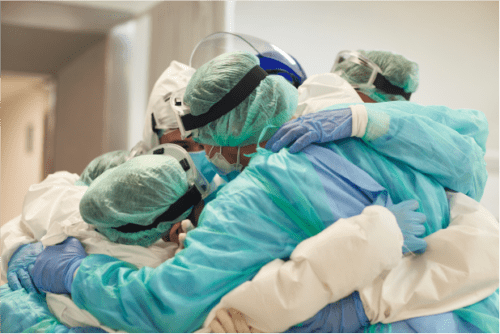
A medical culture that focuses on “fixing” leads to health care workers distancing themselves from the experience they are living through with their patients. Western culture’s resistance to suffering has been prevalent in medical care. This especially comes into play considering that families are often unable or not allowed to be by the bedside and advocate for their loved one. Some health care professionals zero in on an intended result rather than truly seeing the person in front of them—and in times of COVID-19, with so many sick having so little support, a change in approach is necessary.
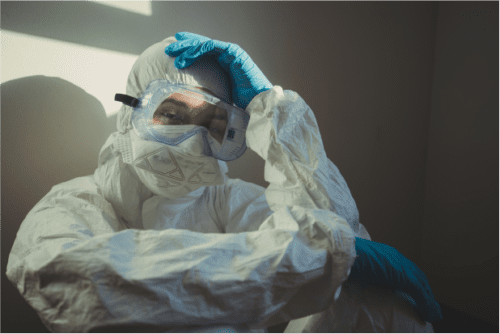
This isn’t to say that health care professionals aren’t suffering either. They’re facing a wave of potential PTSD and moral injury as a result of hospital restrictions to reduce the spread of COVID-19.
A narrative review and conceptual framework published by the Annals of Internal Medicine uncovered seven concrete ways to protect clinician mental health: resilience and stress reduction training, providing for basic needs, specialized training for jobs that changed due to COVID-19, clear communication from leadership, strategies to address moral injury, peer and social support interventions, and mental health support programs. However, with these solutions spanning from the individual level to a structural one, widespread implementation while still in the midst of the pandemic presents a near impossible challenge.

Being creative in our collective grief
Grief, in its nature, feels lonely. Punctuated by loss, humans feel an absence deeply, burrowed in sadness that feels individual and unique only to them.
We see it in ourselves, in our colleagues, in our co-workers, acquaintances, the friendly faces we used to see on commutes and at places we used to frequent, and in bearing witness to the losses that have defined 2020. It all goes back to the idea of this collective grief that has gripped our world.
But in sharing and holding this grief, in being witnesses to all that has come from this year, there is great opportunity to be creative and expand our idea on how to provide community to one another and support each other in this time of need.
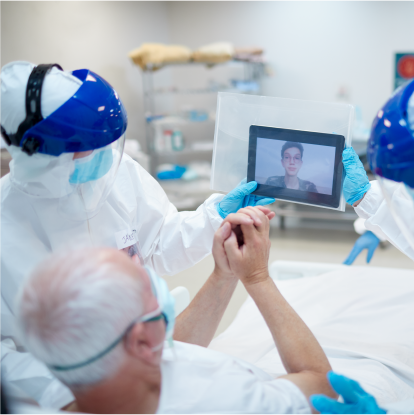
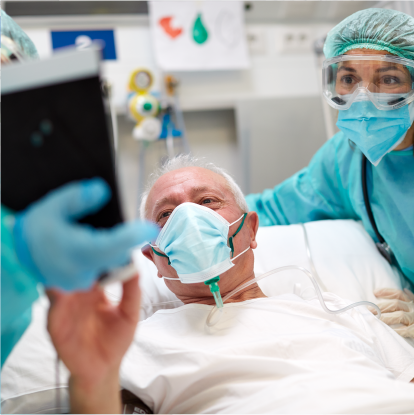
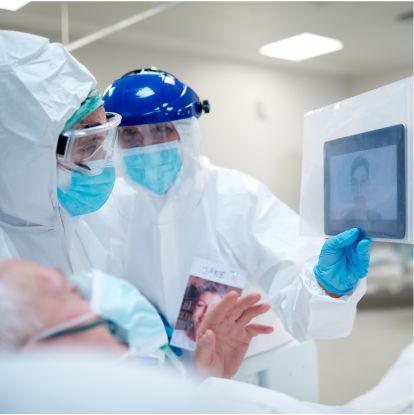
“We see this with the stories of all of our nurses and physician colleagues and aides and the ancillary folks who were there in the hospitals acting as our interim intermediaries,” Dr. Belton says. “They’re learning really fast how creative they can be to meet this need, to bridge the experience with iPads, notes, and telephones.”
Rogenski has seen this creativity too firsthand in her role as director of The Hummingbird Project, a therapeutic activity program committed to supporting older adults and those living with dementia through cultivating joy, engaging curiosity, and fostering personal expression.
“With COVID-19, we quickly pivoted (practically overnight) to offering our program virtually, growing our service delivery model to be able to provide services through technology across the nation, and still seeing clients in person as we are able safely wearing masks and PPE,” Rogenski explains. “Our strategy today includes our on-on-one virtual and in-person activity program, virtual group programs, education and advocacy, and providing more resources than ever before. I remain inspired, amazed, and overjoyed by the ability of our team and those we work with to embrace this change and have fun and find joy despite it.”
Rogenski hopes the pandemic brings light to the negative impact of social isolation and loneliness.
“My journey through my grandmother’s experience living with dementia and then dying during the pandemic—I believe due to the social isolation she experienced—has raised many questions in my heart and mind,” she wrote. “I do not know the ‘answer,’ but I do have a wish: My hope is that this pandemic has brought to light the negative impact of social isolation and loneliness for all beings. We must create a new, more holistic, more inspiring experience for our elders through embracing creative connections, defining community, and through joy. Love must win.”

Learn more about Saybrook University
If you are interested in learning more about the community and academic programs at Saybrook University, fill out the form below to request more information. You can also apply today through our application portal.
Find Out More
Recent Posts

